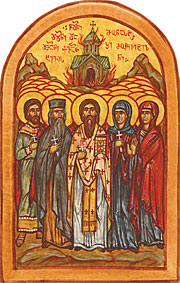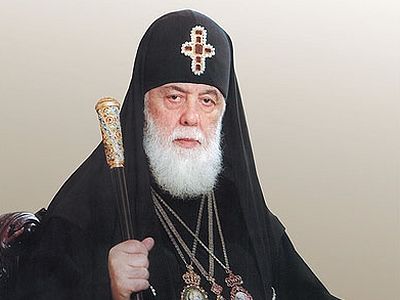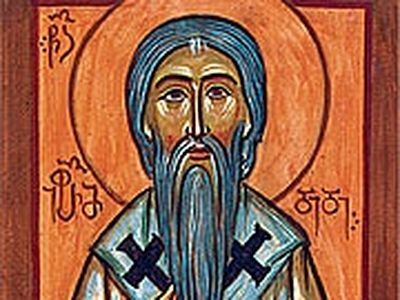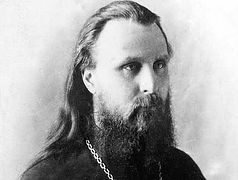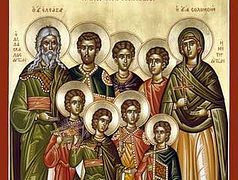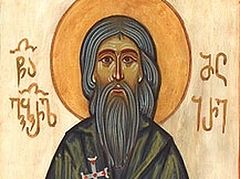Memory 15 (28) April
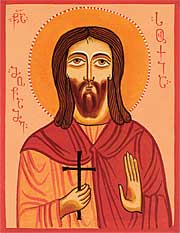 Holy Martyr Sukia Holy Martyr Sukia |
| Holy Martyr Sukia |
The holy martyrs Sukia, Andrea, Anastasi, Talale, Teodorite, Ivkirion, Iordane, Kodrate, Lukiane, Momnanos, Nerangios, Polievktos, Iakob, Poka, Domentian, Bictor, and Zosime were Georgian noble lords who served the Albanian government (in the southeastern Transcaucasus)[1] in the 1st century a.d.
These seventeen holy men arrived in Artashat, the Armenian capital during the reign of King Artaksar (88–123). They were accompanying Princess Sateneki, the daughter of the Albanian ruler and bride of the Armenian king.
In Artashat they met the elder Khrisos, who had been ordained by the Apostle Thaddeus, and became his disciples. Khrisos journeyed with the seventeen noble lords to Mesopotamia and baptized them in the waters of the Euphrates. While the Holy Sacrament was being celebrated, the princes beheld Christ Himself, standing atop the hill. The newly converted Christians could not abandon this place, so they erected a cross where they had been baptized and called it the “Cross of the Annunciation.”
But before long King Artaksar sent envoys to Khrisos, requesting that his disciples be returned to Armenia. “Let them decide for themselves whether or not they will return,” the elder replied.
Furious at the elder’s audacity, the pagan messengers drew their swords and massacred Khrisos and four of his disciples. But they were afraid to harm Sukia since he was a relative of Queen Sateneki.
The survivors buried their brothers and began to labor in the wilderness as ascetics. St. Sukia became abbot of the brotherhood, and the monks moved to Sukaketi Mountain near the village of Bagdevand.
The former noblemen led a strict ascetic life, permitting themselves to eat nothing but plants and to drink nothing but spring water. Constantly exposed to the open sky, the monks’ skin took on the texture of scorched clay, and their bodies grew coarse, thick hair to shield them
from infirmities.
After some time a new ruler, Datianos, ascended the Albanian throne, and he soon learned that his noblemen had been baptized into the Christian Faith and were living as hermits. He ordered Sukia and the others to return to the palace and promised to receive them with honor. He threatened that if they refused, the rebels would be killed.
Datianos’ messenger, Barlapa, located the elder, who by this time more closely resembled a savage than a prince. He relayed the ruler’s order, but Sukia courageously resisted.
Outraged at the saint’s reply, Barlapa ordered that the brothers be bound and cast into a fire. To his great amazement, the holy martyrs chanted psalms as the flames slowly engulfed them. As a final blow, the ruler’s henchmen massacred the princes with their swords, then scattered
the charred remains.
This happened in the year 123 (100 or 130, according to other sources).
The godless King Artaksar would not permit the remains of the martyrs to be buried, but God Himself preserved their relics incorrupt for 230 years. Then, in the 4th century, a group of faithful Christians uncovered the holy relics, moved them to a shrine, and carved the names of the saints on the rock where they were buried.
Later the holy hieromartyr Gregory, Enlightener of Armenia (†335), built a church and founded a monastery in the place where St. Sukia and his companions were buried, and a healing spring gushed forth from the ground where they lay.
O Holy Sukia and thy Sixteen Companions, pray to Christ God to have mercy on our souls!
[1] Transcaucasian Albania (Rani in Georgian) of the first century was located in the area now occupied by Hereti (southeastern Georgia) and central Azerbaijan. The people of Transcaucasian Albania are of no relation to present day Albanians.

